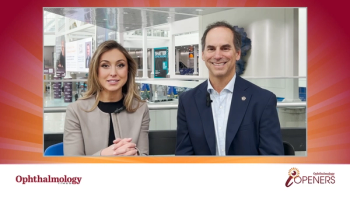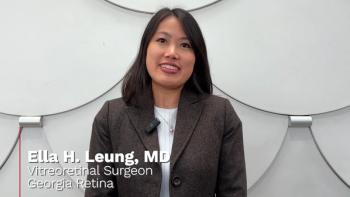
Predicting workforce needs in eye-care space difficult
Analytics may help EyeMDs to provide appropriate access, quality, cost of care
New technology and prevalence of disease is difficult to predict, so any solution to the manpower issue has to be flexible.
Predicting excesses and shortages of certain types of providers in the eye-care space is difficult, and much of the data upon which this is based is open to interpretation. David Parke II, MD, believes some of that interpretation is incorrect, and looked at putting together an evidence-based set of analytics to help determine how ophthalmologists
Flexibility key
“To me, if there’s an overall theme to this, it’s the need for flexibility,” said Dr. Parke, chief executive officer of the American Academy of Ophthalmology (AAO). Previous major workforce studies that focused on the eye-care needs of the American population have been incorrect. They predicted excesses where shortages ultimately existed and shortages where excesses existed, he added.
Dr. Parke explained the reason for this is a complex equation to try to determine what future demands, supply, and need are with regard to eye care, especially because key variables such as new technology,
An example of this is the explosion of antivascular endothelial growth factor (VEGF) intravitreal injections. No one putting together manpower studies or projections could have anticipated the transformative effect that would have on eye care, so the projections did not match real life, Dr. Parke said.
Down the road, there will be drugs and delivery devices introduced which lengthen the required interval between injections, and at some point, injections will no longer be needed. Though there is no way of knowing when that will happen, when it does occur, it will have a profound influence on access to care, workforce needs, and need for care.
Physician extenders
The AAO is committed to the concept of
These individuals work together to extend the value of a particular set of practitioners, whether it is comprehensive ophthalmologists, subspecialty ophthalmologists, or optometrists.
“It’s critical to make sure that whatever systems are put in place -and whatever models of care are developed-ensure we end up with the highest-quality care being available to patients, and that we solve the access and the cost issues as best we can at the same time,” said Dr. Parke, adding the three issues -quality, cost, and access -are the major drivers.
Delivery of care is seen in a different way now from even 10 or 15 years ago, when it focused on the interface between a physician and a patient. Now, in addition to that focus, population health is brought into play, looking at how to solve the needs of specific populations of patients.
Misinformation
Dr. Parke also pointed out that there is misinformation about the supply side, in terms of how many ophthalmologists or optometrists there will be going forward or how much of a role physician assistants and nurses are playing, for example.
Dr. Parke also noted that some federal government workforce presumptions may be flawed, due to the Health Resources Services Administration (HRSA) having incomplete and inaccurate information as to how many ophthalmologists are in the United States.
There are attempts under way to rectify the problem, he noted. Whatever numbers are used, the same caveats apply. The model of care used will impact things going forward, and will change with technology and other advances, he said. These factors make this a complex situation, and one that requires a flexible solution to change with the times.
Disclosures:
David Parke II, MD
E: [email protected]
This article was adapted from Dr. Parke’s presentation at the 2018 Johns Hopkins Wilmer Eye Institute’s Current Concepts in Ophthalmology meeting in Baltimore. Dr. Parke has no financial interests to disclose.
Newsletter
Don’t miss out—get Ophthalmology Times updates on the latest clinical advancements and expert interviews, straight to your inbox.













































